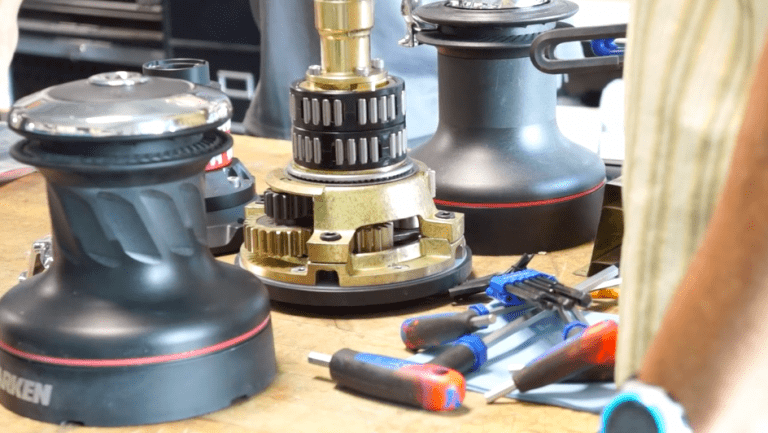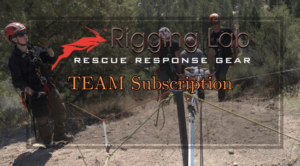Maximizing Safety and Readiness: Inventory and Tracking Systems for Rope Rescue Equipment
In technical rope rescue operations, readiness and safety hinge on the condition and availability of specialized equipment. For fire departments and rescue teams, a well-organized inventory and tracking system is not just a logistical tool but a lifeline. This blog explores the essential features and benefits of inventory management systems tailored for rope rescue gear and how they enhance operational efficiency and safety.
How Inventory and Tracking Systems Revolutionize Rope Rescue Operations
Managing rope rescue equipment is a complex and critical task. The stakes are high, as lives often depend on the reliability and readiness of this gear. Here’s why such systems are indispensable:
- Ensuring Equipment Readiness:
- Rope rescue operations demand precise and immediate access to gear. Inventory systems ensure all items are accounted for, operational, and ready for deployment.
- Automated tracking minimizes the risk of gear being misplaced or forgotten, especially during high-pressure scenarios.
- Enhancing Safety Compliance:
- Rope rescue equipment is subject to strict safety standards, such as those outlined in NFPA 2500. Regular tracking and maintenance scheduling through inventory systems ensure compliance.
- Expiration date monitoring prevents the accidental use of gear that has exceeded its safe operational lifespan.
- Improving Operational Efficiency:
- Manual tracking methods can be time-consuming and error-prone. Automated systems streamline processes, freeing up personnel for critical tasks.
- With features like mobile access, teams can manage inventories remotely, improving response times.
What Makes a Great Inventory and Tracking System for Rope Rescue Gear?
When selecting a system, it’s essential to prioritize features that cater specifically to the unique challenges of technical rope rescue. Here are the critical components:
1. Barcode or RFID Tracking
- Why It’s Important: Enables rapid and accurate inventory counts, reducing human error and saving valuable time during operations.
- How It Works: Gear is tagged with barcodes or RFID chips, allowing for quick scanning during check-in/check-out or inspections.
2. Expiration Date Monitoring
- Why It’s Important: Many items, such as ropes and harnesses, have defined lifespans. Monitoring ensures outdated equipment is retired before it becomes a liability.
- How It Works: The system alerts teams when gear approaches expiration, providing ample time for replacements.
3. Maintenance Scheduling
- Why It’s Important: Routine inspections and maintenance are vital for identifying wear and preventing equipment failure during critical operations.
- How It Works: Systems automate reminders and log maintenance history, ensuring no piece of gear is overlooked.
4. Mobile Access
- Why It’s Important: Rescue teams often operate in remote or unpredictable locations where immediate access to inventory data is crucial.
- How It Works: Mobile-friendly systems allow updates and checks from any device, enhancing flexibility and on-the-go management.
5. Customizable Checklists
- Why It’s Important: Different rescue scenarios require specific gear. Checklists ensure nothing essential is left behind.
- How It Works: Users create tailored checklists for various operations, cross-referencing them with inventory to confirm readiness.
6. Reporting and Analytics
- Why It’s Important: Detailed insights into equipment usage and maintenance trends enable informed decisions and proactive management.
- How It Works: Systems generate reports on inventory levels, usage frequency, and maintenance records, supporting strategic planning.
Implementation Tips for Maximum Impact
Transitioning to an inventory management system requires thoughtful planning. Here’s how to ensure success:
- Assess Your Needs:
- Evaluate the types of gear, team size, and operational frequency to determine system requirements.
- Identify pain points in your current inventory process to address them effectively.
- Choose Cloud-Based Solutions:
- Cloud systems offer remote access, automatic updates, and enhanced data security, making them ideal for dynamic rescue environments.
- Train Your Team:
- Comprehensive training ensures all personnel understand the system’s capabilities and can use it effectively.
- Provide hands-on demonstrations and create user-friendly guides for reference.
- Conduct Regular Audits:
- Periodic inventory checks maintain accuracy and uncover discrepancies before they become critical.
- Use system analytics to identify patterns and optimize inventory levels.
- Integrate with Existing Systems:
- Compatibility with other firehouse management tools streamlines operations and reduces redundancies.
Why Fire Departments and Rescue Teams Need This
Technical rope rescue equipment is unique in its complexity and safety requirements. Without a robust system, teams face risks such as:
- Uncertainty in Gear Availability:
- Missing or misplaced equipment can delay responses, potentially endangering lives.
- Compliance Challenges:
- Failure to adhere to safety standards risks operational shutdowns and liability issues.
- Reduced Efficiency:
- Time spent on manual inventory management detracts from training and readiness.
By implementing a tracking system tailored to their needs, teams can address these challenges proactively, ensuring readiness and safety at all times.
Specialized Software Solutions
PSTrax
- Real-time inventory tracking across multiple locations.
- Automated alerts for low stock or maintenance needs.
- Simplified check-in/check-out processes.
- Robust reporting and analytics tools.
GearLog
- Stores comprehensive gear information, including photos and manuals.
- Provides alerts for inspection due dates.
- Offers QR codes for gear or compatibility with third-party tags.
- Builds specialized gear lists for specific rescue operations.
- Tracks equipment usage and manages loans and returns.
Enhancing Operational Readiness
A robust inventory and tracking system is a vital investment for any fire department or rescue team. By streamlining gear management, automating critical reminders, and providing actionable insights, these systems not only enhance safety but also ensure your team is always ready to respond effectively to rope rescue situations.
Related Questions
- What specific features are essential for technical rope rescue inventory management?
- How can automated tracking systems enhance the efficiency of rope rescue operations?
- What are the challenges of managing technical rescue equipment inventory?
- How does barcode scanning improve the tracking of technical rescue gear?
- What are the best practices for maintaining technical rescue equipment records?
For more insights and resources on rope rescue systems and equipment, explore:
- Creating Your Rope Rescue Equipment SOP:
This link can support sections about implementing a structured approach to managing inventory, emphasizing the importance of Standard Operating Procedures (SOPs) for ensuring consistency and readiness. - Organizing Rope Rescue Equipment:
This resource aligns with the need to maintain a well-organized inventory. It can be linked to discussions about setting up efficient storage and cataloging systems for easy access. - Choosing Rope Rescue Equipment:
This can enhance the section on assessing needs by guiding readers on how to select the right gear for their specific operations, which is a foundational aspect of inventory management. - Rescue Response Gear: PSTrax Overview:
This link directly ties into the discussion on PSTrax, providing readers with detailed insights into this specific software solution for inventory tracking and management. - Rescue Response Gear: GearLog Overview:
Similar to the above, this link complements the section on GearLog, offering more in-depth information about its features and how it supports rope rescue teams.
Peace on your Days
Lance










